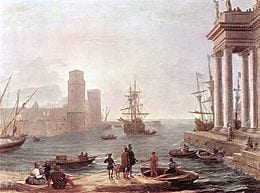In the poem La Belle Dame sans Merci, a knight tells the story of how he becomes obsessed with, and then gets abandoned by, a spirit known as “The Beautiful Lady Without Mercy.” Though seemingly aware she’s an illusion, the knight lingers in his memory of the Lady, and it’s implied he will do so until he dies. In this relationship, the knight’s love turns from enchantment into an obsession.
Through his example, the poem expresses two linked warnings about the dangers of intense romantic love which may transform into an obsession. When the object of obsession disappears, the lover left behind undergoes a spiritual death, losing the ability to appreciate the beauty in anything but the memory of what is lost. These warnings suggest that love, though wonderful, can quickly shift into a kind of metaphorical death if it becomes obsessive. The knight first describes falling in love with the Lady as a kind of enchantment that consumes him completely. The Lady he finds in the meadow is “Full beautiful, a faery’s child.” The Lady’s perfect beauty captures the knight’s attention. By describing her as the child of a magical creature, he emphasizes that her ability to charm him is a supernatural force. Enchanted further by the mysterious wildness in her eyes, the knight begins serving the Lady and devoting all his emotional energy to her. He weaves the Lady “bracelets” and “a garland,” and in reward receives her “love” and “sweet moan.”
However, the line between enchantment and obsession is dangerously thin. The Lady soon becomes the knight’s single focus, seemingly his single source of life. Besides the Lady, the knight sees “nothing else … all day.” This may sound like hyperbole, but the knight means it: the Lady creates a private world for herself and the knight.
Soon, the knight sees her in everything as he is obsessed. The flowers transform into suitable material for the Lady to wear. The hillside cave, a feature of the natural landscape, becomes the Lady’s “Elfin grot.” As the knight’s obsession deepens, he grows to depend on the Lady even for basic nutrition. The Lady feeds the knight “roots of relish sweet, / And honey wild, and manna-dew.”
Having devoted so much emotional energy to the Lady and put himself completely under her control, the knight undergoes a spiritual death when she disappears. In his dream the knight sees the Lady’s former victims: “pale kings,” “princes,” and “warriors”—”death-pale were they all.” In their faces, he sees the man he will become: someone deathly, starved, and captivated by memories of the Lady to the point of enslavement. Like them, he will wake up “death-pale,” or, as the speaker first describes him, “Alone and palely loitering”—physically alive, yet condemned to replay his memory of an obsessive love for the rest of his days. The Lady is finally revealed to be La Belle Dame sans Merci—literally, The Beautiful Lady Without Mercy.
Strangely, the Lady’s merciless behaviour actually consists of the love and joy she provides; her sudden disappearance is what makes the knight’s experience so painful exactly because she was previously so kind. The shape of the Lady’s cruelty suggests that anything one falls in love with or obsesses over can cause such pain since anything can disappear in an instant. The poem thus cautions against such intense, obsessive love, arguing that it’s ultimately not worth the agony it can cause.


 ]
]

